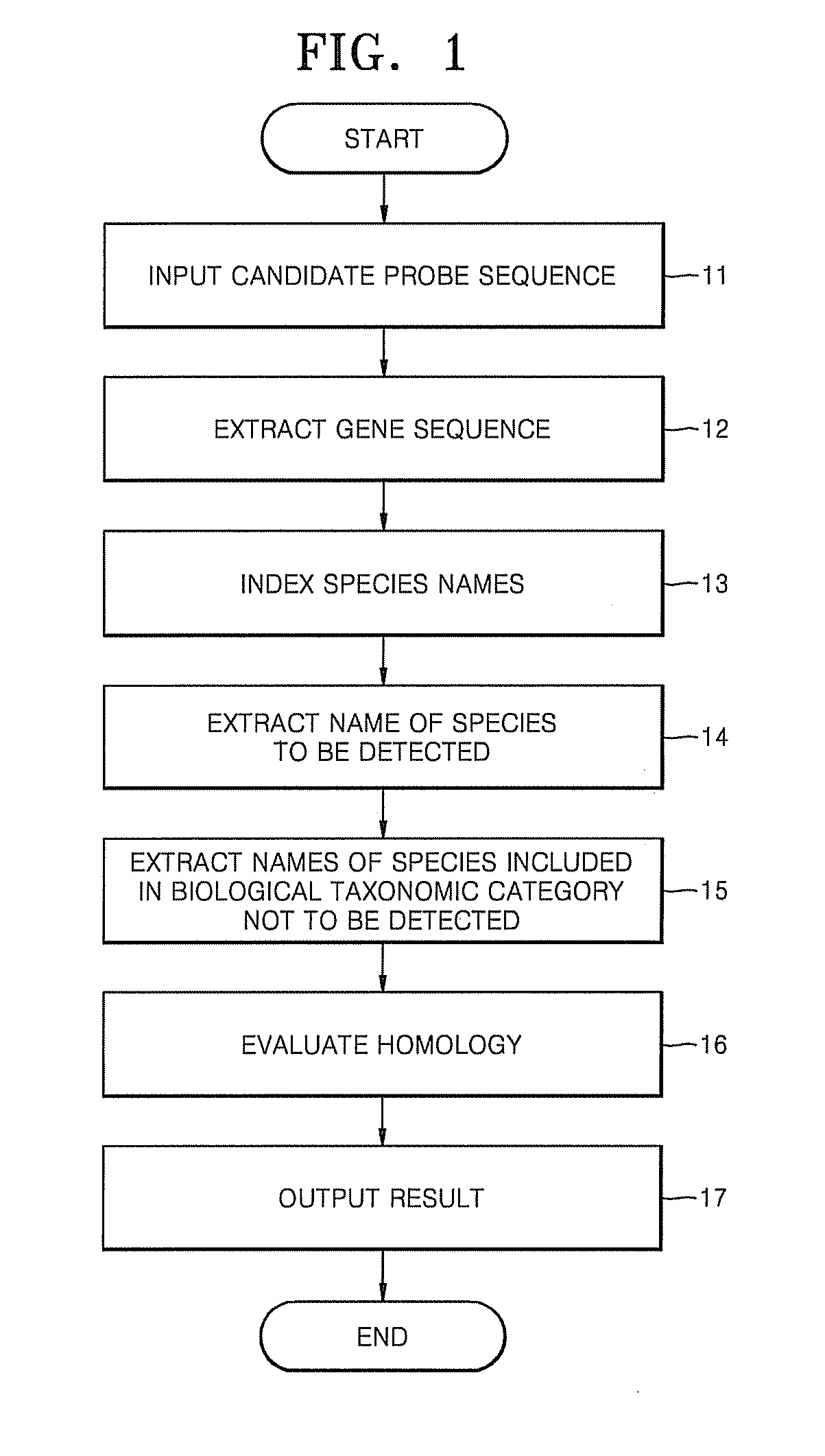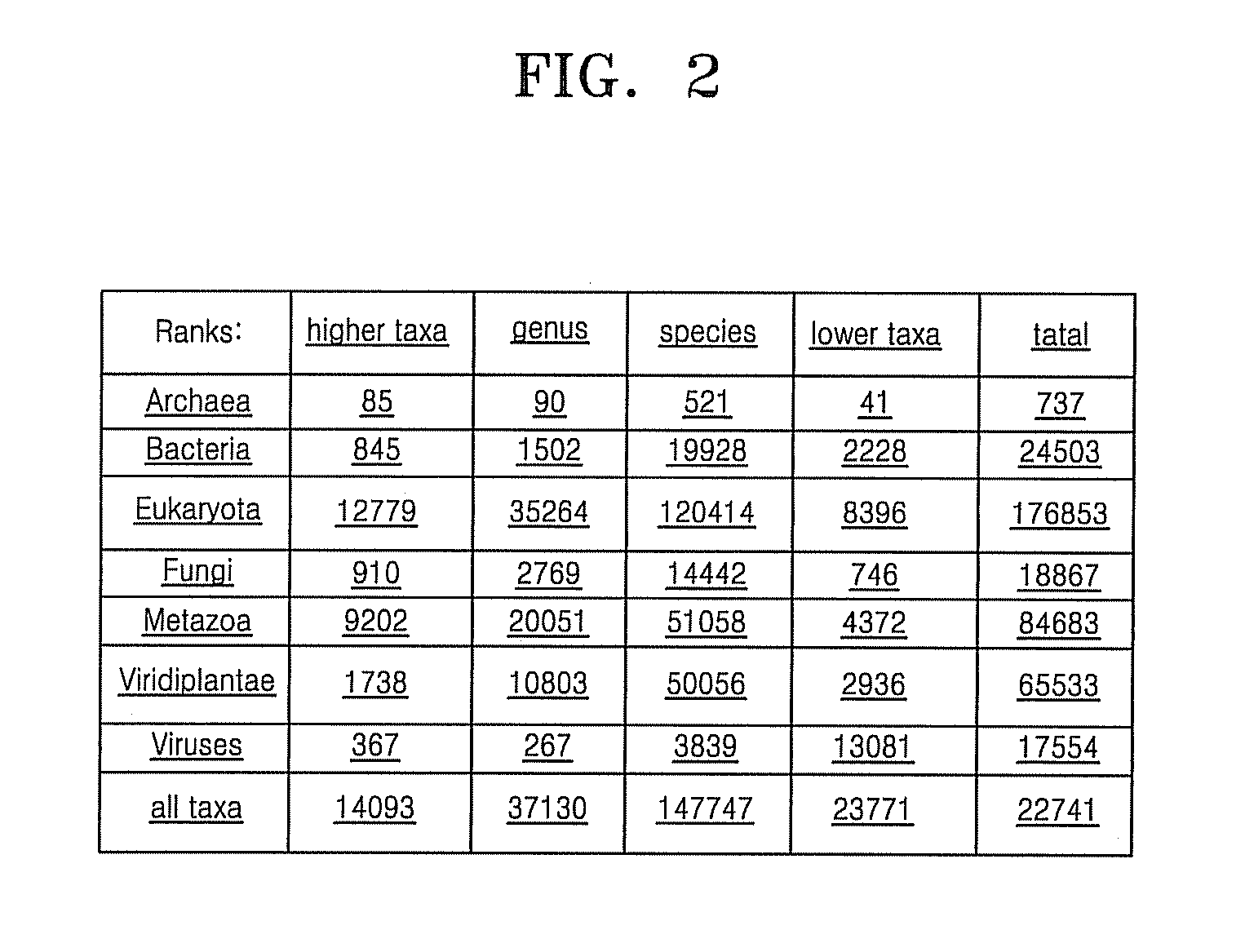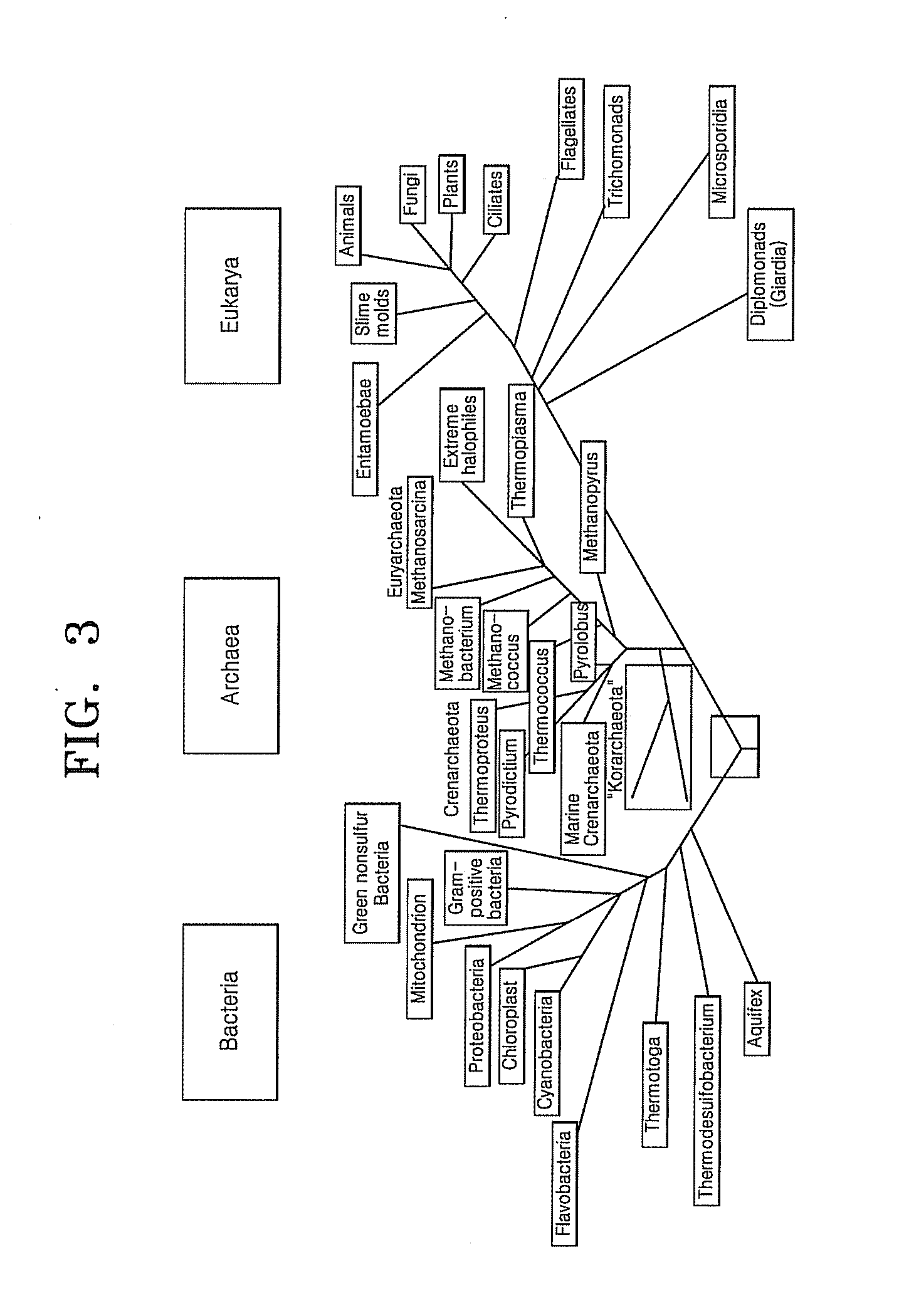Method and apparatus for determining specificity of a candidate probe
a technology of candidate probes and specificity, applied in the direction of lighting and heating apparatus, fixed installations, instruments, etc., can solve the problems of large number of experimental errors, inability to design a probe using all known genes of bacteria or other pathogens, and inability to solve complex probe design
- Summary
- Abstract
- Description
- Claims
- Application Information
AI Technical Summary
Problems solved by technology
Method used
Image
Examples
Embodiment Construction
[0021] Hereinafter, the present invention will be described more fully with reference to the accompanying drawings, in which exemplary embodiments of the invention are shown.
[0022]FIG. 1 is a flow chart illustrating an exemplary embodiment of a method for determining specificity of a candidate probe according to the present invention;
[0023] Referring to FIG. 1, the sequence of a candidate probe is input by a user (operation 11). More specifically, the user inputs the sequence of the candidate probe, the name of a species to be detected by the candidate probe, and the name of a biological taxonomic category to not be detected by the candidate probe.
[0024] The candidate probe sequence can be selected using any method. Additionally, any methods of selecting a probe sequence can be used in combination.
[0025] The sequence of a candidate probe can be input as exact nucleotide bases, such as A, C, G and T. Alternatively, a candidate probe sequence can be input using symbols representin...
PUM
| Property | Measurement | Unit |
|---|---|---|
| hybridization strength | aaaaa | aaaaa |
| structure | aaaaa | aaaaa |
| LENGTH | aaaaa | aaaaa |
Abstract
Description
Claims
Application Information
 Login to View More
Login to View More - R&D
- Intellectual Property
- Life Sciences
- Materials
- Tech Scout
- Unparalleled Data Quality
- Higher Quality Content
- 60% Fewer Hallucinations
Browse by: Latest US Patents, China's latest patents, Technical Efficacy Thesaurus, Application Domain, Technology Topic, Popular Technical Reports.
© 2025 PatSnap. All rights reserved.Legal|Privacy policy|Modern Slavery Act Transparency Statement|Sitemap|About US| Contact US: help@patsnap.com



